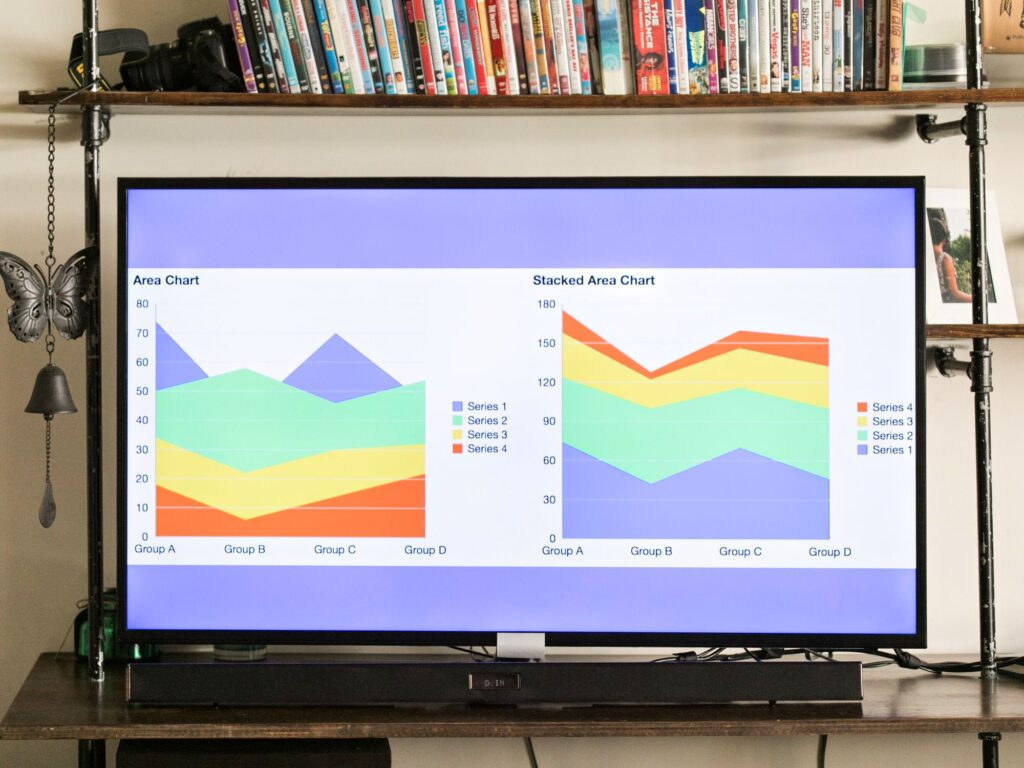
It’s important to understand how to optimize your handmade business blog with SEO to see a successful online performance. Maintaining a blog on your handmade business’s website will allow you to become more discoverable to online shoppers. Blogs help boost SEO quality by positioning your website as a relevant answer to your customers’ questions.
Blog posts that use a variety of on-page SEO tactics can give you more opportunities to rank in search engines and make your site more appealing to visitors. If you already have a blog as a part of your marketing strategies, you know that it is not just writing without a blueprint. There is something you must implement; SEO for small businesses.
What is Blog SEO?

Using technical and on-page key word techniques to increase your blog’s visibility in organic searches. This is what we refer to as blog SEO. Understanding how to implement this into your webpage will increase your search engine ranking.
When using small business SEO, you should have two primary goals. The first goal being to ensure search engines can find and understand your blog posts to deliver relevant searchers. The second goal being to write relevant blog content that aligns with your audience’s needs and interests.
The techniques used to do this are not altogether different from those you’d use to optimize the content on other parts of your site. As such, if you’re already an SEO practitioner, these strategies may be familiar to you.
The chief difference is that when you’re working on a blog, you’re explicitly using SEO to support an ongoing long-form content strategy. That means developing in-depth, informative, and relevant content that aligns with your audience’s needs and search intent. Write with the SEO tactics you may already know to help your content succeed.
Benefits of Blogging for SEO

With every post you create and optimize, there will be several benefits. The goal is of course to education, and gain new customers. However, you’re also doing so much more than that. It’s both a benefit for you, and for your audience. It will imperative for you to understand this while learning how to optimize your handmade business blog.
Some of the return you can receive include:
- Increase your visibility in organic search
- Establish your credibility as a trusted resource
- Build your site’s authority over time
- Make your content visible to the right people
If you want to be successful, you should be educating your audience. Show what you’re doing and get your name out there. Prove to your customers that you’re trustworthy and knowledgeable in your field. Blogging can help you do this.
A well-maintained blog provides your site with a steady stream of brand-new, original, quality content. Over time, as readers and search engines discover that content, you’ll begin to be recognized as a reliable source of information. Thus, will help you rank higher.
Factors That Affect Blog SEO

There are several things you should consider before implementing these optimization techniques into your website. Depending on how you approach each of these categories, can affect the success of your website. Therefore, you should take these very seriously and give them devoted effort and time.
Dwell Time
Dwell time is an indirect ranking factor for Google, but it’s a critical factor in the user experience. User experience is key when it comes to SEO. Dwell time is the length of time a reader spends on a page on your blog site. From the moment a visitor clicks on your site in the SERP (Search Engine Results Page), to the moment they exit the page is considered dwell time. This metric tells search engines the value of your content. The longer they spend on the page indicates that is more relevant to them.
The bad side of this metric, is that is completely subjective. The algorithm doesn’t know your content strategy. Perhaps, you planned to have short-form content that your readers will read in 2 minutes. Or maybe you included all the valuable information at the beginning of your blog post. These little things will make your audience spend less time on the page. Search engines do not understand this. Therefore, dwell time can affect small business SEO. However you should not manipulate your content to change this metric if it doesn’t make sense for your content strategy.
Page Speed
Visual elements on your blog can affect page speed, but that isn’t the only thing that affects this. Unnecessary code and overuse of plugins can also contribute to a slow blog site. Removing junk code can help your pages load faster, which will improve page speed.
It is also wise to have a list of your blog site plugins. Determine which plugins you need in order to keep your blog running, and which ones are installed just for a temporary issues. If you uninstall plugins that affect the front end of your site, you’ll see the difference in your page speed. This is something to very aware of while you’re learning how to optimize your handmade business blog. As this will affect the time users spend on your page. One poor experience can turn into a lost customers forever.
Mobile Responsiveness
More than half of Google’s search traffic comes from mobile devices. Your blog site might follow that same trend. Optimizing your blog site for mobile is a factor that will affect your SEO metrics. But what exactly does this means? The industry rule-of-thumb is to keep things simple.
To optimize your site for mobile, consider using responsive design rather than separate URLs for mobile and desktop. This way, content is more accessible to share across devices. Back linking to your blog won’t be divided among two URLs, increasing the power of these inbound links.
Here are a few simple steps you can take to make for a more user-friendly mobile experience:
- Avoid large chunks of text, which are harder to read on mobile devices.
- Use headers to organize your text into smaller sections.
- Avoid displaying content wider than the screen.
- Space your clickable elements out so that they’re easier to engage with on small screens.
- Use reader-friendly text, avoiding fonts that are too small or difficult to read.
Keep an eye on how your site is performing on mobile by taking a look at your Google Analytics dashboard. You should be running a mobile site speed test regularly to stay up-to-date on this.
Recent and Trustworthy Data
Another indirect ranking factor of SEO that should be included in blog posts is trustworthy data. Recent and trustworthy data gives visitors relevant and accurate information which makes for a positive reader experience. When you include a link to a credible site that has original, up-to-date data, you’re telling the search engine that this site is relevant to your readers. Over time, your readers will come to appreciate the content which can be confirmed by using other metrics like increased time on page or lower bounce rate.
How to Optimize Blog Content for Search Engines

SEO is a long game. Optimizing your blog for SEO can take time to see the results. So, if you’re just getting started, it’s okay to take small steps while you figure out the more complex aspects of your new SEO strategy.
The following are some great blog SEO tips to improve your content and climb the rankings in search:
Identify Your Blog’s Target Audience
No matter what industry your blog targets, you’ll want to identify and speak to the primary audience that will be reading your content. Understanding who your audience is and having a deep understanding of your C.T.A. (call to action) will help guide your blog strategy. If you want your blog to be successful, you must be able to predict who your readers will be.
To define your blog target audience and how to optimize your handmade business blog, take a look at your current customer demographics. Find out who’s already engaging with your brand. You probably already have a lot of this information on hand. A few invaluable sources of information:
- Information you’ve collected during lead generation and sales.
- Insights from your sales team.
- Your Google Analytics data.
Leverage Topic Clusters to Maximize Keyword Research
Now that you already defined your target audience, it’s time to find out what content your readers want to consume. Keyword research can be a heavy task to take on if you don’t begin with a strategy. Therefore, we recommend starting with the topics your blog will cover. Then expanding your scope from there.
Comprehensive keyword research is critical to a blog’s success. If you want to maximize your keyword impact, try creating topic clusters. A topic cluster is a group of blog posts that put together in-depth a broader subject.
With topic clusters you can target variously related, less competitive keywords to rank for a broader and more difficult umbrella keyword. They can have numerous benefits for your SEO, including:
- Improving your blog’s visibility by making it easier for search engines to crawl.
- Increasing your blog’s authority in that topic over time.
- Enabling you to rank for broader and more difficult keywords.
- Allowing more successful posts to boost less successful ones through interlinking.
Once you’ve found one or two keywords, the next step is to incorporate them into your blog post. There are four essential places where you should try to include your keywords: title tag, headers & body, and URL.
Add Visuals to Your SEO
Search engines like Google value visuals for certain keywords. Images and videos are among the most common visual elements that appear on the search engine results page. You’ll want to design creative graphics, use original photos and videos. Add descriptive alt text to every visual element within your blog post.
Video content is particularly worth the effort for a new blog post. Videos keep the user on a page for a certain amount of time. This can help your bounce rate lower.
Alt text is a major factor that determines whether or not your image or video appears in the SERP. Plus, how highly it appears. Alt text is also important for screen readers so that visually impaired individuals have a positive experience consuming content on your blog site.
Write a Catchy Title
You don’t have complete control over how your page appears when it comes up in search results. But you can still improve it by optimizing your page title. Therefore, it’s important to optimize your blog for SEO. Start with the title. The title of your blog post is the first element a reader will see when they come across your article. This heavily influences whether they’ll click or keep scrolling. A catchy title uses data, asks a question, or leads with curiosity to pique the reader’s interest.
The elements of a catchy title include power, emotional, and common words. In the right proportions, these types of words in a blog title will grab your readers’ attention and keep them on the page.
Some ideas that can help you write an effective title:
- Keep it short. Search results will show the first 50-60 characters on mobile before truncating it.
- Keep it accurate. Your title should accurately reflect what the page is about. Use words like “how,” “what,” or “why,” and include solid descriptors to convey the type of information the reader will find.
- Keep it unique. It may be tempting to recycle the same title tag across your site, but it’s not helpful for your SEO or audience. Instead, write a new title tailored for each page.
Include an Enticing CTA
The purpose of a CTA is to lead your reader to the next step in their journey through your blog. This is a key factor to your success in how to optimize your handmade business blog. The key to a great CTA is that it’s relevant to the topic of your existing blog post. This should flow naturally with the rest of the content. Whether you’re selling a product, offering a newsletter subscription, or wanting the reader to consume more of your content. You’ll need an enticing CTA on every blog post you publish.
CTAs come in all types of formats. Buttons, hyperlinks, and widgets are some of the most common CTAs. They all have different purposes. With this being said, you should add a bold, visible CTA like a button if you want the reader to make a purchase. On the other hand, you can easily get a reader to check out another blog post. By providing a hyperlink at the conclusion of the current article, this can be easily accomplished.
Focus on the Reader’s Experience
The reader experience is the most important part of a blog post. The reader experience includes several factors like readability, formatting, and page speed. That means you’ll want to write content that’s clear. Make sure it’s comprehensive of your topic, and accurate according to the latest data and trends. Organize the content to see the best results while learning how to optimize your handmade business blog
Using headings and subheadings is also important, because it helps the reader scan the content quickly to find the information they need. Keep image file sizes low (250 KB is a good starting point) and limit the number of videos you embed on a single page. By focusing on what the reader wants to know and organizing the post to achieve that goal, you’ll be on your way to publishing an article optimized for the search engine.
Now, let’s take a look at these blog SEO tips that you can use to enhance your content’s search ability.
Review Metrics Regularly

Our final piece of advice is to review the metrics of your blog and website regularly. Google’s free Search Console contains a section called the Search Analytics Report. This report helps you analyze clicks from Google Search it’s useful to determine which keywords people are using to find your blog content.
Remember, this could be something that you’ll struggle with; optimizing blog posts for search. The truth is, your blog posts won’t start ranking immediately. It takes time to build up search authority.
Although, when you publish blog posts frequently and consistently, be sure to optimize them for search while maintaining an intent-based reader experience. You’ll reap the rewards in the form of traffic and leads long-term.
As your website grows, so should your goals on search engines. You now know this includes learning to improve small business SEO by optimizing. Once you understand how to optimize your handmade business blog you can create an optimal user experience, and simultaneously grow your business. By identifying the goals and intent of your ideal readers, you’ll deliver relevant content that will climb the ranks of the SERP.
Want to learn more about ways to grow your handmade business? Join the our newsletter below to receive educational hot takes, access to VIP webinars, special offers, and more! Start streamlining your business today, with Inventora!


